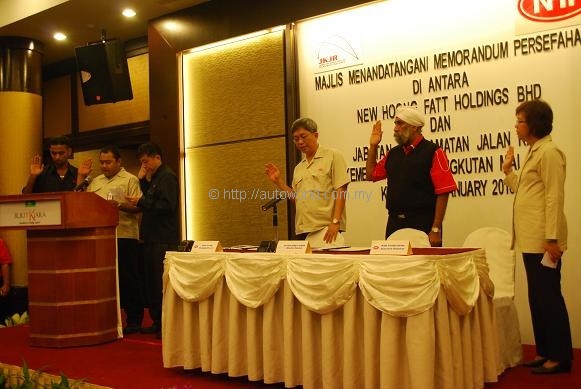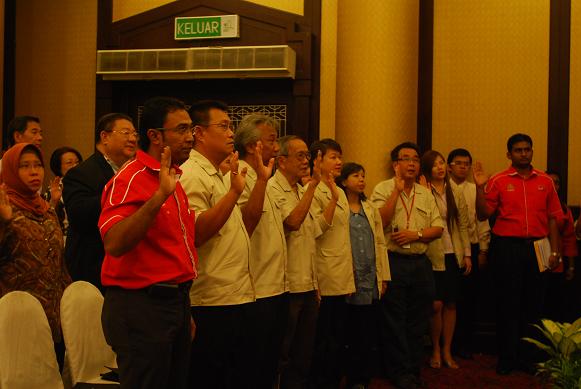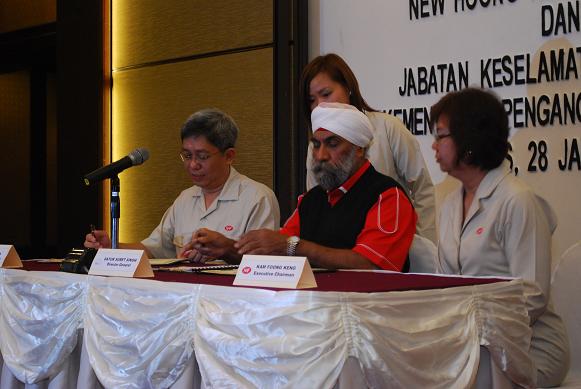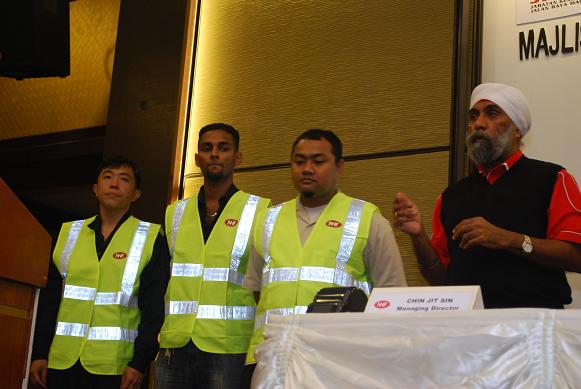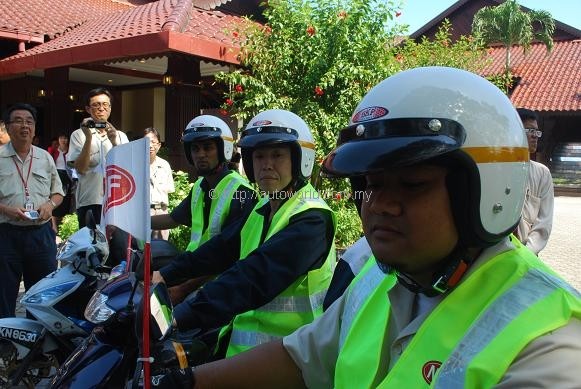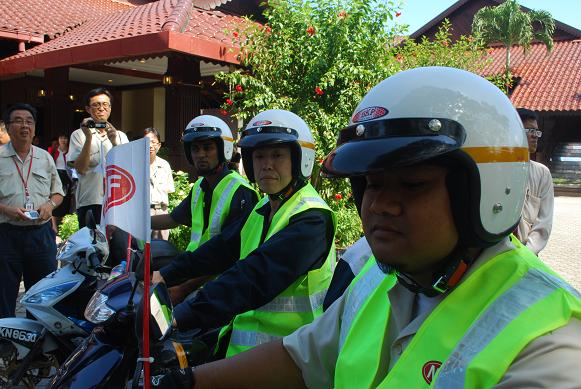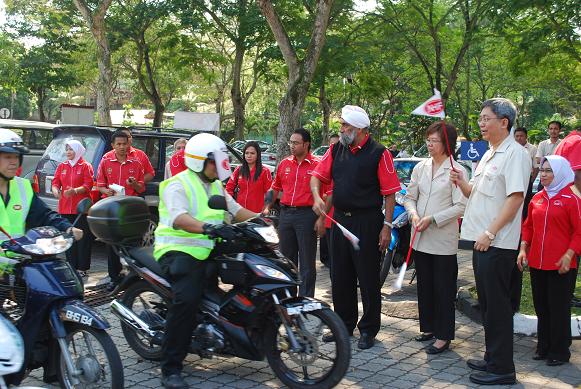New Hoong Fatt Holdings signs MoU with Road Safety Dept
Earlier today, a Memorandum of Understanding (MoU) was signed between auto parts supplier New Hoong Fatt Holdings Bhd (NHF) and the Road Safety Department to pave the way for a partnership to develop and implement road safety programmes for NHF employees. Signatures on the MoU were from Mr Chin Jit Sin, MD of NHF, and Datuk Suret Singh, Director General of the Road Safety Department.
Speaking at the signing ceremony, Mr Chin said, “NHF has more than 1,000 employees, a large number of whom are motorcyclists. Over the last few years, there has been an increase in the number of our employees involved in road accidents. This trend alarms us and we decided to take a positive step by collaborating with the Road Safety Department to promote road safety among our employees to help reduce the number of road accidents.”
Indeed, NHF was stung into action by recent losses of two employees to road accidents. Production operator Mohamad Zaimey Zin bin Ahmad perished in 3 June 2009 due to severe head injuries from an accident, while Ahmad Usman bin Jayasalam is suffering from 30-40% permanent paralysis / disablement in his left limbs due a road accident that took place on 11 Dec 2008, when he was only 19.
“We believe that through education, accidents can be prevented and lives can be saved, and we are thankful to Datuk Suret and his team for helping us drive him this road safety message to our employees. As a responsible employer, NHF takes every precaution in our work processes to ensure the safety of our employees. Signing this MoU with the Road Safety Department takes our commitment to safety to the next level,” elaborated Mr Chin.
At the signing ceremony, NHF distributed reflective jackets to its motorcycle-riding employees while the Road Safety Department presented them with crash helmets. As part of the mooted cooperation, the Road Safety Department will be conducting a road safety talk for NHF employees ahead of the upcoming Chinese New Year travel season.
Explaining his department’s motives in supporting NHF’s cause, Datuk Suret said, “The Road Safety Department’s vision is ‘zero death resulting from road accidents’. In signing this MoU with NHF, we are one step closer to fulfilling this vision. Our role is to educate and increase the level of awareness of road safety amongst the public. Through advocacy programmes and collaboration with caring corporations such as NHF, we hope to achieve this vision.”
At the ceremony, Datuk Suret also took the opportunity to deliver the message to all road users that the Road Safety Department will continue to step up their efforts in cultivating safe road practices both in the aspect of education and also enforcement.
In fact, he specifically noted that come May 2010, a total of 1,000 traffic cameras, electronic and automated, will be deployed throughout the nation to catch traffic offenders with the primary focus on speeding and traffic light violation. Some of these cameras will be fixed, and some mobile. These cameras are said to be of sufficiently high resolution to be able to photograph both the car and the offender’s face.
Writer’s Note:
I personally admire the tenacity of Datuk Suret and the Road Safety Dept in tackling the issue of road safety for the country. They lack of neither passion nor initiative in their championing of the cause, and that deserves praise.
Road users are told in no uncertain terms that they need to eliminate practices such as using of mobile phones, cutting of queues, beating red lights, improper fastening of seat belts or helmets, overtaking on double white lines, and speeding.
I am in complete agreement with all of the above, except for speeding. No doubt, saying ‘speed kills’ is the politically correct thing to do, but that’s not the whole truth. Speed on its own does not kill, it’s the difference of speeds between colliding bodies that does the damage. A car doing 50 in a 110 zone is equally as dangerous as one doing 150.
Another problem with strictly enforced speed limits is that rather than keeping their eyes on the road, where the real action is, drivers have to constantly cast anxious glances at the speedometer to ensure that it doesn’t pop over 110.
Speed limits in congested areas are fine, because people certainly shouldn’t be doing triple-digits around the schools or the neighbourhood, but on the highways, there needs to be some flexibility. Anybody has accident statistics of the autobahn?






